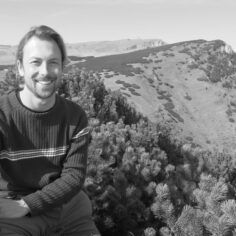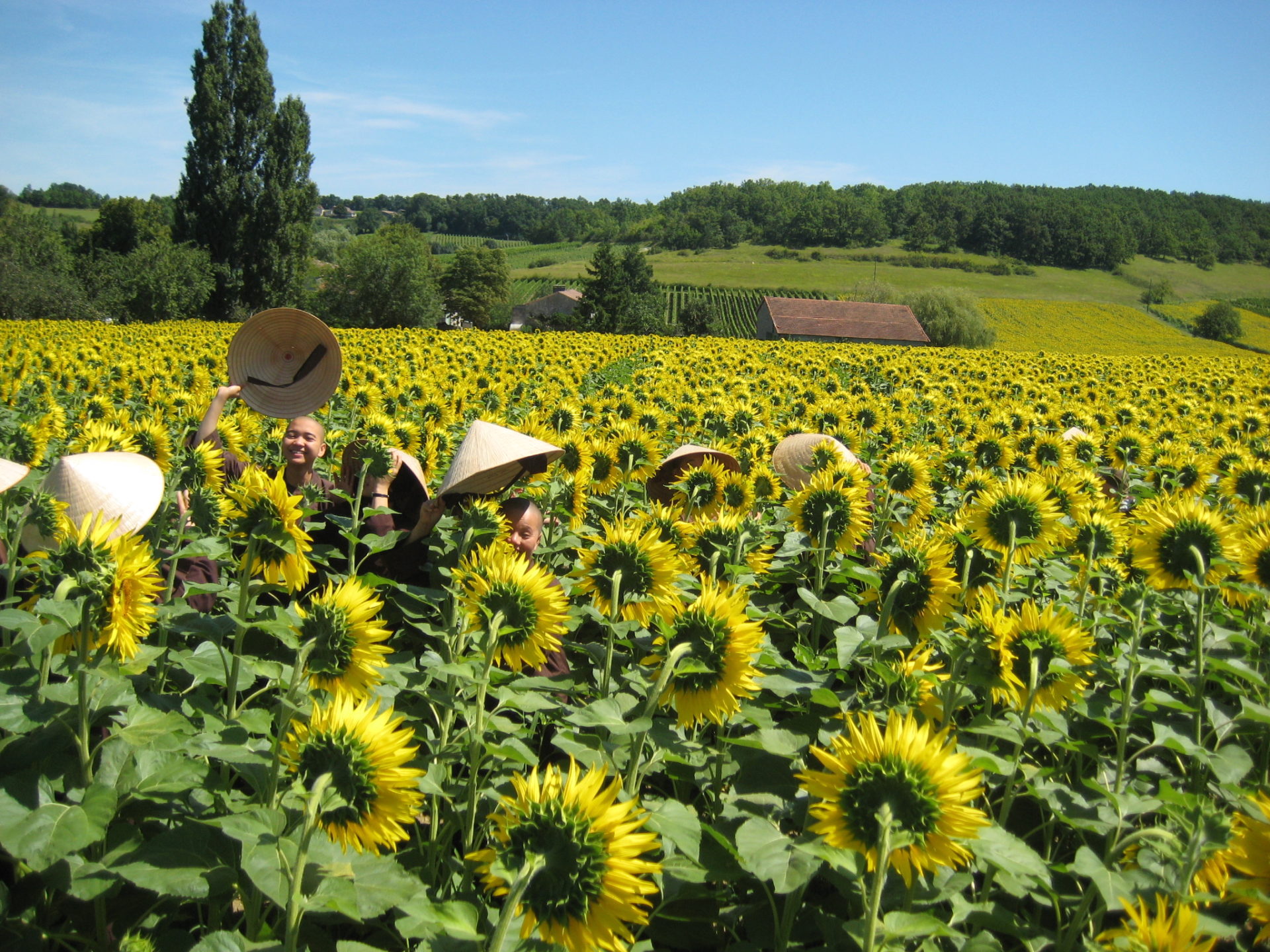Practicing Upeksha in Wake Up
By David Viafora in June 2015
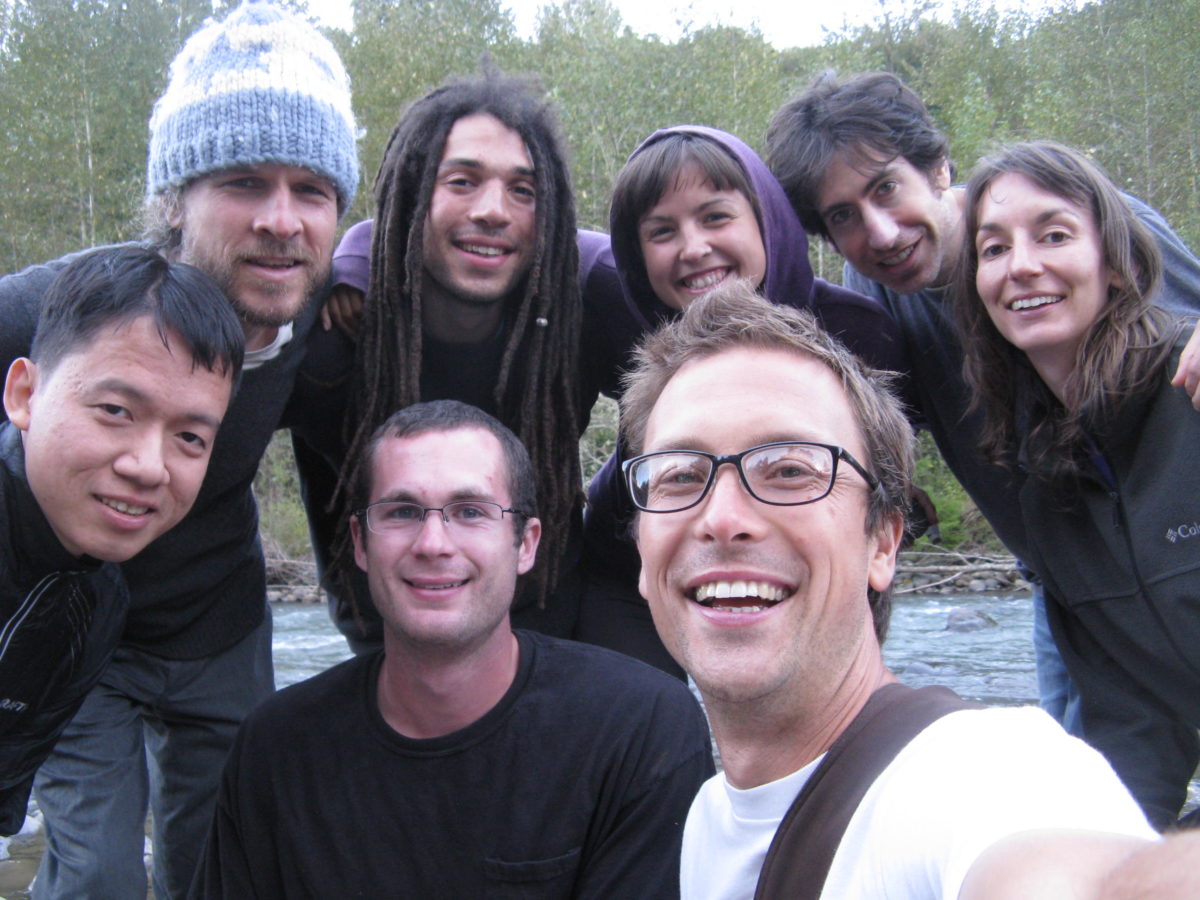
The practice of inclusiveness (also known as equanimity or upeksha) may be one of the most challenging edges of practice that we confront as Wake Up practitioners. The strength of Wake Up is that it channels the vitality, creativity, and joy of young adulthood and creates a special haven for young adults to support each other in their unique developmental tasks.
Practicing Upeksha in Wake Up
By David Viafora in June 2015

The practice of inclusiveness (also known as equanimity or upeksha) may be one of the most challenging edges of practice that we confront as Wake Up practitioners. The strength of Wake Up is that it channels the vitality, creativity, and joy of young adulthood and creates a special haven for young adults to support each other in their unique developmental tasks. But the fact that Wake Up is geared exclusively towards young adults can also create challenges to relationships with others in our Sangha. The specific age limitations in Wake Up can unintentionally foster perceptions of separation. This needs to be dealt with skillfully and with care. Our aspiration is to embody the love and support of our larger community, not to create an “us vs. them” mentality.
A few years ago, several of us were organizing and facilitating our first Wake Up retreat. Some of the organizers felt that the age cutoff should be very clear and straightforward: thirty-five and below, end of discussion. Our parameters of inclusion were modeled similarly to the people of color retreats, in which very distinct boundaries are skillfully used to create an appropriate setting of practice by distinguishing who is invited to participate, especially during Dharma discussion groups.
Some of the residents at the practice center were in their late thirties and early forties, and we had initially given them the impression that most of the retreat activities would be exclusively for younger adults, thirty-five and under. Our Wake Up retreat was new to them but they graciously accepted us and our age limitations.
As the retreat drew near, the local Wake Up Sangha included a participant in her late thirties. Since she was a regular practitioner and friend in the local Wake Up group, she was included by the facilitators to participate in the retreat. We had forgotten that we had already told others that they were not welcome to participate on account of their age (“not being young enough”). Meanwhile, we were selectively inviting others above thirty-five to join our retreat. It was not until the end of the retreat that we realized how inconsiderate and hurtful this was to some of the residents who were working to support the retreat. They felt that we had discriminated against them and excluded them from our gathering. Fortunately, our guiding Dharma teacher at the practice center held a debriefing for us after the retreat, to celebrate our many successes as well as open our eyes to the suffering taking place. During this discussion, one of the residents shared, “You made us feel separate.” I’ll never forget hearing that. These were members of my Sangha family, and we did not consider their needs for inclusion and community.
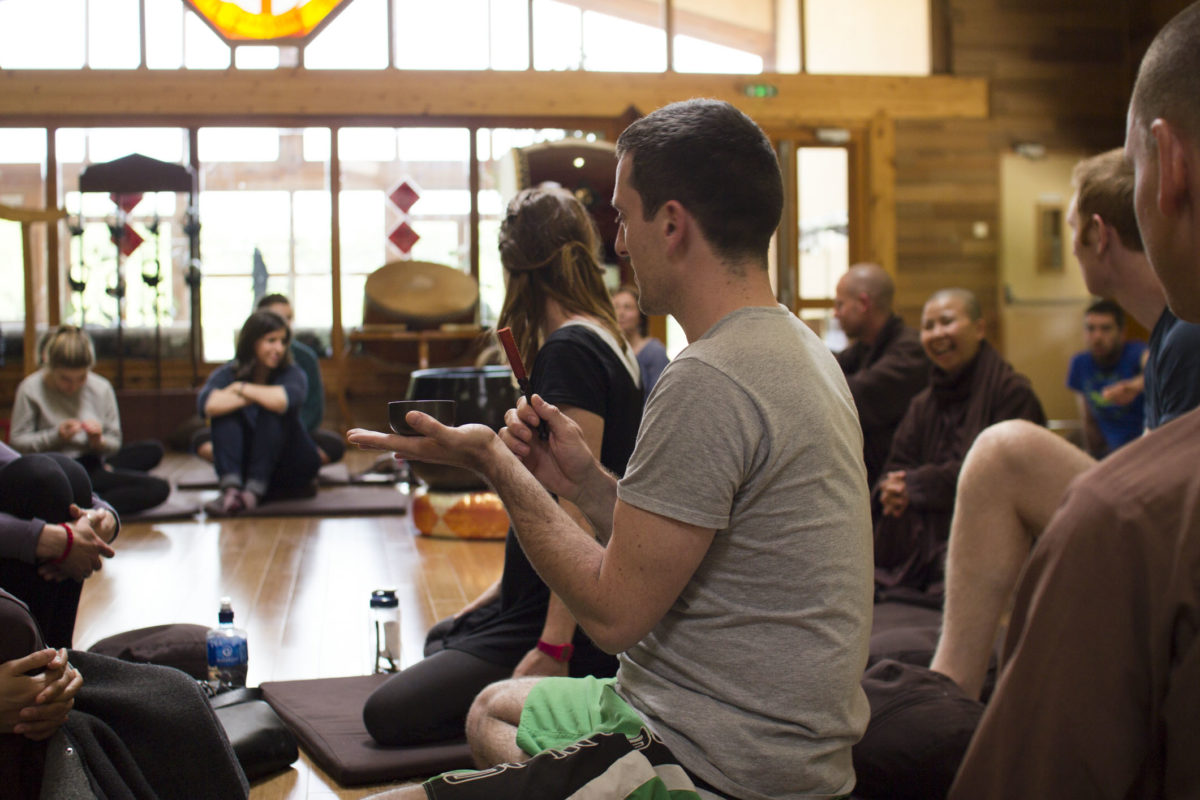
LEARNING TO SEE, LEARNING TO EMBRACE
They felt hurt, but it may have been those of us in the Wake Up retreat who really missed out. The residents were seasoned practitioners who had already learned how to integrate the practice into their lives, including navigating the trials and tribulations of young adulthood. We could have benefited tremendously from their solidity of presence, their kindness as older brothers and sisters, and the wisdom of the most recent decade of their lives. But we were new to organizing a retreat, very naïve about the significance of including or excluding others, and clearly unskillful in our attitude. We had not yet learned how to embrace the rest of our Sangha as part of our retreat and benefit from their storehouse of practice. Fortunately, our discussion after the retreat helped us to see the suffering that was outside of our narrow vision as young facilitators. That retreat taught us how crucially important it is to consider whether we are watering seeds of separation and exclusion or seeds of communion and inclusiveness in the hearts and minds of our Sangha family.
At first, I thought that it was just a simple logistical error we made in planning the retreat, but now I see that there were two deeper layers of suffering. First, suffering was caused when we discriminated against certain people. But second, on a broader level, we were exclusive in our mindset and approach towards our gathering as a Wake Up community. We didn’t know how to lovingly embrace our whole community as part of our Wake Up community. It is possible to gather together as young adult practitioners and also as young adults within a larger community that supports and nourishes us. We didn’t know how to lead skillfully before, but now we are wiser and will be more skillful in the future.
This retreat appeared to be a growing edge of practice for those in the practice center as well, especially considering that they were not accustomed to intentional gatherings for a specific population. It can be a challenging situation for anyone in a community who is not invited to participate. We should allow and even expect some suffering to be there, especially if such retreats are new to a community, so we can embrace the challenges together with compassion and support. People may have to embrace difficult feelings and possibly old wounds related to our core needs of inclusion and belonging.
Some people in our Sangha may not feel sensitive to the age limitations of Wake Up. Others may be intimidated or feel excluded because they are “not young enough” to participate. We live in a culture that gives status and prestige to being young and beautiful. These ideas can give rise to false feelings of superiority or prestige and can water seeds of exclusion and separation from others who are not in our age group. As Wake Up practitioners, we need to be careful not to fall into this trap, which is based on the illusion of a separate self.
How do we overcome these false perceptions of separation, whether they are complexes of superiority, inferiority, or equality? Is Wake Up not a beautiful branch that grows out of the deeply rooted Sangha tree? One way to overcome these false perceptions is to reflect upon the reality that our Wake Up group is only possible because of the support, care, and guidance of our larger Sangha body. We can look deeply to realize the precious gifts that we receive from our community, such as guidance, stability, resources, and the teachings that have been passed down for many ages. We can also reflect upon our wholesome intentions for gathering, such as supporting each other’s unique growth as young adults and discovering the gifts we have to offer to our larger spiritual family, such as our idealism, playful vitality, and freshness.
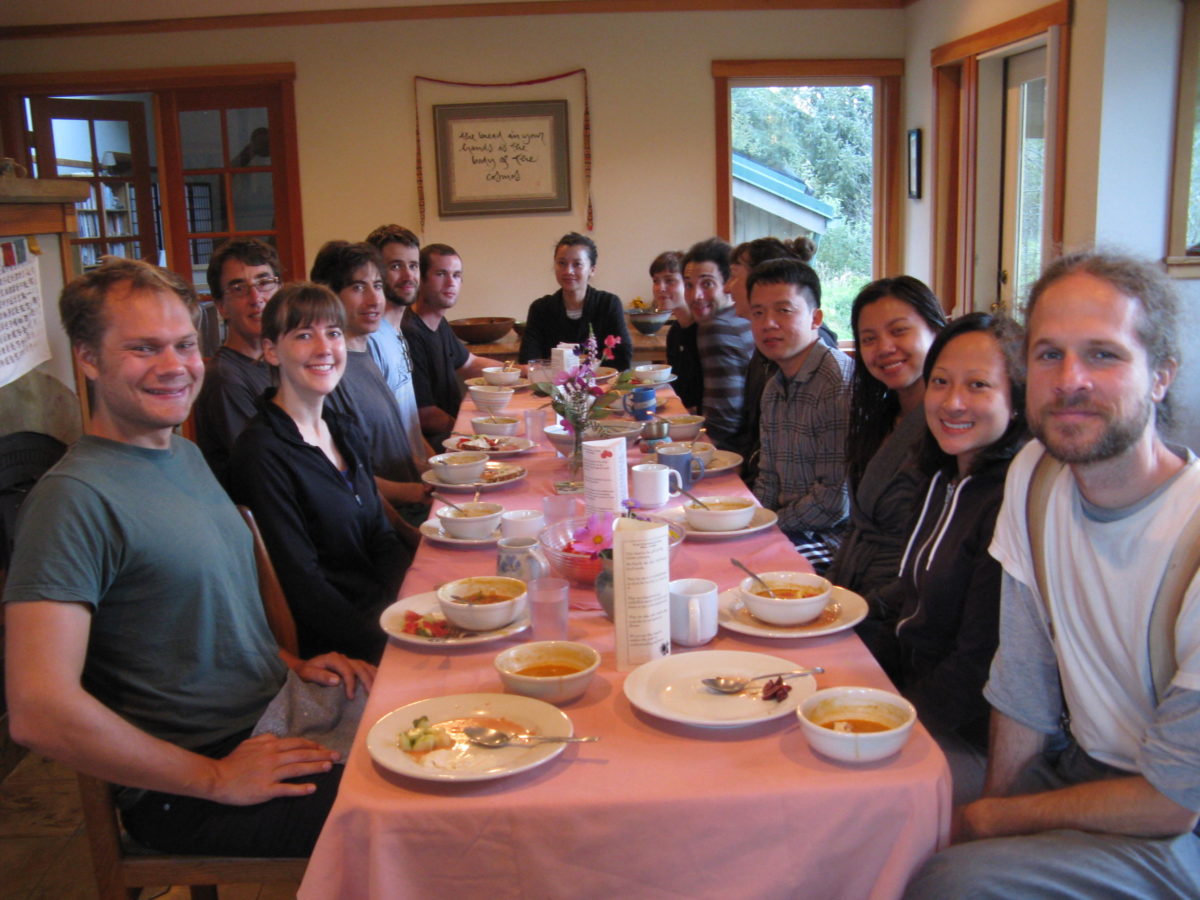
TEACHERS UNTO OURSELVES
Over the past few years, older Sangha friends have asked me many questions about why Wake Up needs to be different and separate from our larger Sangha. They can understand the need for a teen group or even an under-twenty-five group. “But thirty-five and under? What’s that about?” “What’s the big difference between early thirties and older thirties?” “Why so much about Wake Up? Don’t we all need support equally as practitioners?” These questions are valid and deserve to be discussed. In order for Wake Up to be truly successful, we need the support of our broader Sangha family. So we need to help others to understand why Wake Up is so helpful and powerful for our practice and how that supports our larger Sangha.
I have seen many more young people attracted to Wake Up retreats and Wake Up groups than to general retreats and Sanghas. Quite simply, it’s an enormous Dharma door for young people to step into the practice. Wake Up makes the practice as accessible to young adults as a candy shop is to a child who lives down the street, just a bike ride away. Young people are our future, so we need to create “barn door Dharma doors” that are as wide as possible to support our future collective awakening. We are very fortunate that Thay has so enthusiastically championed youth outreach and embraced young adults in our community. I have witnessed other traditions struggle to attract young people and keep their community balanced and flourishing. Wake Up is truly a gift from our teacher to all of us.
Every generation of young adults is on a different wavelength than the previous one in the way they are opening up to the world’s possibilities. As young adults, we benefit tremendously from freedom in the way we create our practice as well as play, laugh, sing, and envision the world we hope to create together. Sometimes we need to do this with everyone else. Other times we just need to be with those of our own age so we can be teachers unto ourselves, without forms and beliefs already established for us to follow. We feel empowered to create Sangha and embody the teachings in ways that may have been unimaginable for our predecessors, while still building upon the tradition that our ancestors created for us. We trust the light that has been wholeheartedly transmitted to us, and then we freely explore new forms for our practice together. If we look around and see what Wake Up groups around the world are doing, we can see how the unimagined comes to life! Flash mob meditations, Wake Up houses, international Wake Up Order of Interbeing Skype Sanghas, and Wake Up tours across the world are just a few examples.
As young adults, we are in between flying out of the nest of our blood families and building a solid nest for our new family. We are less settled into our roles in the world and this leaves us more open to new roles, lifestyles, and visions of how our world can be. From a developmental perspective, it’s a critical time that determines how we direct our life energy into the long haul of adulthood. Our developmental tasks for this period are exploring livelihood, lifestyles, romantic relationships, and bringing new lives into the world. Developmental experts suggest that our most important goal in this period is to learn how to form meaningful, intimate relationships with others and the world. So it’s a critical stage that will define the quality of our family and livelihood in future years. Our world needs as many people as possible to cultivate true love in their lives, and we need the support of our larger spiritual family to do this. In a small amount of time––five, ten, or fifteen years––we will all be practicing more wholeheartedly and gratefully with everyone else because we have been supported so graciously during our youth.
NO MORE SEPARATION
The practice center very graciously supported us to hold another Wake Up retreat the following year. The facilitators for this gathering incorporated a deep and clear intention of practicing inclusiveness. Unfortunately, the former resident practitioners in their thirties and forties were no longer living there, but there were other middle-aged residents. Throughout the retreat, we enthusiastically welcomed them to join our practices of sitting and walking meditation, Dharma discussion, mindful art activities, our Be-In, and all the meals in mindfulness. We included and embraced everyone in the community in our hearts, and that was enough. Two of the residents joined all of our sitting, walking, and tea meditations, which provided a depth of solidity in our collective practice and allowed us to feel seen and supported by them. While we frequently invited them to participate with us in other activities, they wanted to honor our gathering and offered us space to be with ourselves. This was a gift from them, as they supported our intentional gathering, but we could still feel the loving support, guidance, and encouragement in their presence during the entire retreat. A new resident became our Sangha big sister, not only helping us to prepare meals but also offering her deeply caring presence to a few retreatants who were ill, and listening deeply during break periods to the vicissitudes and drama of young adult lives.
During our closing circle, our big sister accepted our invitation to join our songs and last discussion, in which everyone shared about the power of the retreat for them. Even though our big sister wholeheartedly supported us throughout the retreat, she shared what a tremendous gift we had offered to her. She was able to be a part of and witness the joys, challenges, and transformations that we experienced during the retreat. As a Wake Up practitioner, I find that it is a precious gift to feel truly seen by the eyes of our mentors and larger Sangha.
It felt like there were no barriers of age or any other separation between us. There was only love––and that is the practice of inclusiveness.
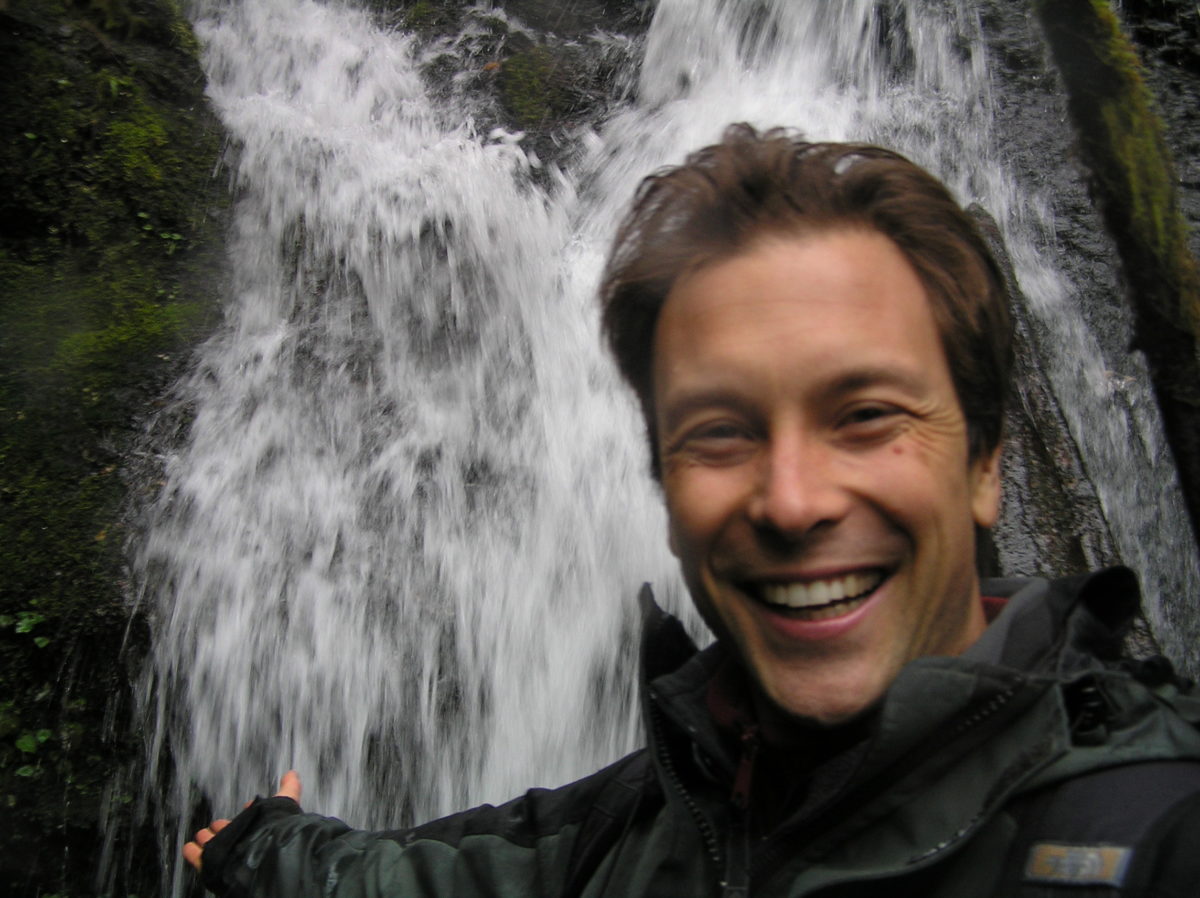
Many thanks to the other Wake Up facilitators, as well as current and former Mountain Lamp community residents, for their contributions to this article. And special gratitude to Eileen Kiera, our guiding mentor who has generously offered us the support and freedom to co-create a new retreat at Mountain Lamp, make plenty of mistakes, and learn deeply from them.
